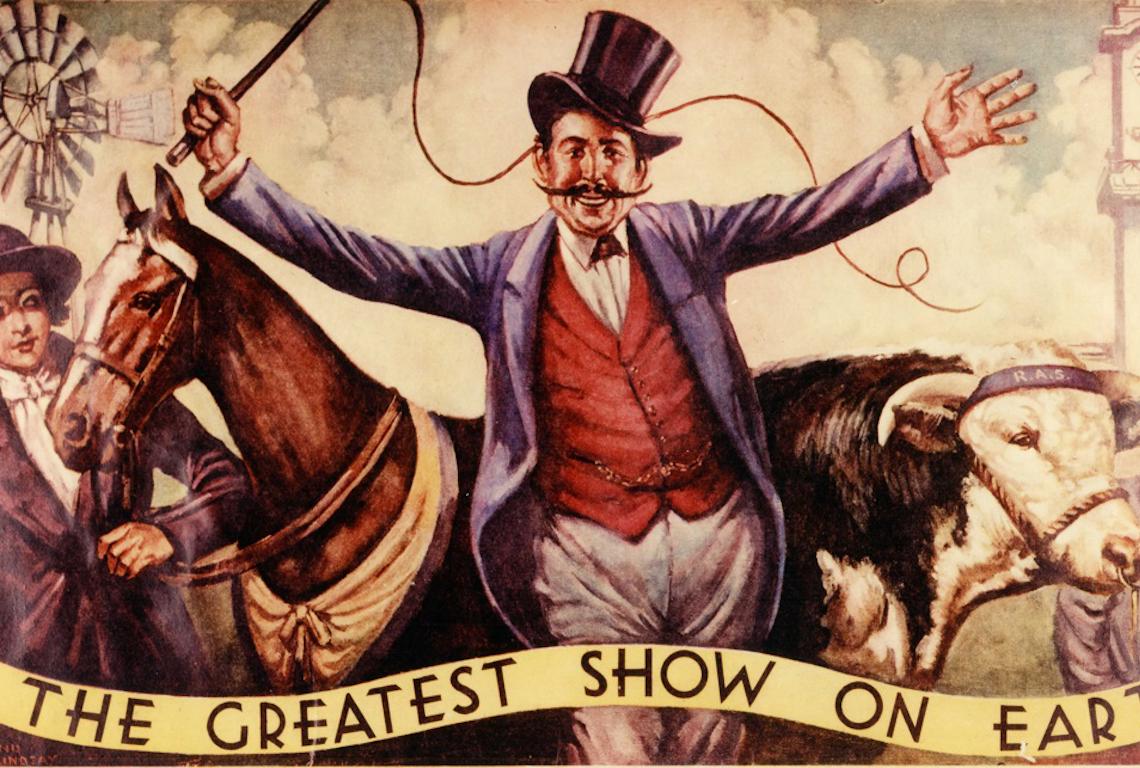Ringmaster Heritage Highlight

History of the Ringmaster
The role of ringmaster was first officially recognised in 1901 at a time when horse events were becoming more varied and mixed competitions, like sheepdog trials and bicycle races, were added to the ring. Mr JH Sullivan was the first appointee but due to illness he was absent during the Show and duties were carried out by Mr JA Saunders instead. Typically, ringmasters are exceptional horsemen and have been horse committee members of long standing. Their main task is to schedule the intricate program of horse events and the Grand Parade, but they also have oversight of the entertainment and whatever else happens in the ring. The pre-Show planning is hard enough but getting it right on the day is problematic given the unpredictable behaviour of man, beast, and Mother Nature.
Despite the complexities of the job, many ringmasters have served long term. The earliest of these, AD Playfair, officiated for 17 years during the period 1905-1924, though sometimes he had to be cajoled. He didn’t mind being ringmaster during the day, he said, but when night sessions were introduced in 1917, he found taking charge of the extra events a severe strain. Ken Mackay, who performed the role for 30 years, and Lorance Angus, for 17 years, have been the other long-standing stayers in the job.
An essential part of the ringmaster’s job has always been oversight of the entertainment. In years gone by many of the acts were amateur and often went wrong. Worst of all was long patches of nothing happening. During Mackay’s era that problem was solved by sending in the Kelly Brothers. They were brilliant trick riders and rodeo clowns and the two could improvise, making fun with whatever was to hand. Once, when the arena was flooded, they famously harnessed up a pony to a rowboat; another year they sent a horse up into members stand to walk around the seats.
Of all the ringmaster’s responsibilities, the ceremonial centrepiece of their work is the Grand Parade. After saluting the RAS President, the ringmaster sets it in motion to follow serpentine patterns little altered from year-to-year. At a certain point, the ringmaster blows a whistle for all to stand still. It is a photo opportunity. The tradition goes back to the days of box Brownie cameras when moving subjects would not be in focus. The audience is always asked not to applaud for safety reasons.
The ringmaster famously carries a cane for big events. The traditional ringmaster’s cane was fashioned by Ken Mackay and used up until 2012. The original cane, affectionately known as the ‘ringmaster’s persuader’ rests in a glass case in the Heritage Centre. The current ringmaster’s cane is a replica of the original made by Lorance Angus.